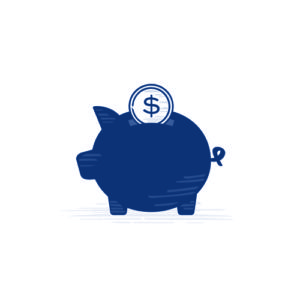Picking Up Pennies – Volume 4

Welcome to the fourth installment of picking up pennies. Last month, we discussed what an Exchange Traded Fund (ETF) is and how its structure can help investors defer capital gains, defer taxes, and keep money invested in the market rather than giving it to Uncle Sam. This month, we’ll discuss how to save on trading costs when buying and selling ETFs.
- Volume 1 – Keep Cash Balances Low (Better Chance for Higher Returns)
- Volume 2 – Asset Location (Reduces Taxes)
- Volume 3 – Using ETFs (Reduces Taxes)
- Volume 4 – Trading ETFs in Competition (Reduces Trading Costs)
- Volume 5 – Number of Funds and Not Auto-Reinvesting Dividends (Reduces Trading Costs)
- Volume 6 – Tax Lots and Tax Loss Harvesting (Reduces Taxes)
- Volume 7 – Summary (Total Impact)
How do ETFs Trade?
ETFs are like stocks in that they are traded throughout the day while the market is open. To buy or sell a share of an ETF, you need to find another investor to trade with. Let’s say it is 1:00 pm, and you want to sell a share of ETF ABC. At that exact time, there may not be anyone willing to buy a share of ABC. Maybe in a few hours, or tomorrow there might be, but you want to sell the share today. This is where market makers come in who will buy your share of ABC and hold it on their books until someone else wants to buy it from them. The market maker is taking a risk by holding on to ABC. What if the price goes down between the time they buy it from you and sell it to someone else?
Because these market makers need to be compensated for the risk they are taking and the service they are providing, they are compensated via a bid-ask spread. A bid-ask spread is the difference between the highest price a buyer is willing to pay for an asset and the lowest price a seller is willing to accept. If an ETF is worth $10, these market makers might be willing to buy ABC for $9.99 and sell it for $10.01. In other words, buy it from you now for $9.99 and sell it a few hours later for $10.01. Market makers pocket the 2 cents between the two prices, i.e., they earn 2 cents on “the spread.”. The cost to you is the 1 cent/share less you received for selling the ETF for less than it was worth, but you had the benefit of selling it immediately. Importantly, this cost is not listed anywhere on your statements. It is simply built into the price you bought or sold the ETF for.
The risk to the market maker goes up the more shares you are trying to trade. Thus, market makers might be willing to buy 100 shares at $9.99, but the next 100 shares will be at $9.98, the next hundred at $9.97, etc. The trading cost to you keeps getting steeper and steeper the more shares you want to trade. These trades can get costly if you are not paying attention and are trading blindly. Is there a better way?
Putting ETFs in Competition
If HIG wanted to trade 1,000 shares of ABC and sent a typical order to sell 1,000 shares to the market, we would end up paying a steep cost. We might be able to get a few hundred shares traded at $9.99, but the next few hundred might be sold at $9.98 or less. This means it could cost our clients over $10 in hidden trade costs (at least 1 cent per share X 1,000 shares). How can an investor minimize these costs?
Investors can minimize these costs by putting their trades in competition rather than sending them blindly to the market. We don’t go to the market and just take the quotes that market makers have posted and incur these costs. Whenever we can, we put all the market makers in competition with each other and make them compete for our business on your behalf. We call up all the market makers and tell them we want to trade 1,000 shares of ABC. We don’t tell them if we are buying or selling and ask them to quote us their best price. By putting these market makers in competition, we squeeze their margins and improve the price our clients can receive on their trades.
Let’s take an example. On October 25th, we wanted to sell 14,000 shares of AVIG in a client account. At the time of the trade, the bid-ask spread was 200 shares deep at $38.67 x $38.72. That means we could have sold 200 shares for $38.67 or bought 200 shares for $38.72. Given that we wanted to sell 14,000 shares, not 200, we probably would have sold the shares for an average price much lower than $38.67. Rather than just sending the trade to the market, we put the market makers in competition and got quoted $38.69 for all 14,000 shares. That is two cents per share better than the quoted bid-ask spread! That means we saved at least $280 on this trade for this client.
Saving 1-2 cents per share you trade doesn’t sound all that meaningful. But as soon as you realize we are trading millions of shares, costs escalate quickly. We care about these costs, even if they don’t appear on a statement. Our clients only see that we sold AVIG for $38.69/share rather than $38.67/share. Clients don’t know we saved them $280 in hidden trading costs on this trade. As background, it’s estimated that less than 20% of financial advisors take the time to put their clients’ ETF trades in competition to reduce these hidden costs. In 2023, we traded ~$9 million shares of ETFs in our client accounts. Assuming we saved ~$0.02/share on average by trading via competition, that is $180,000 in savings. Now you know!


